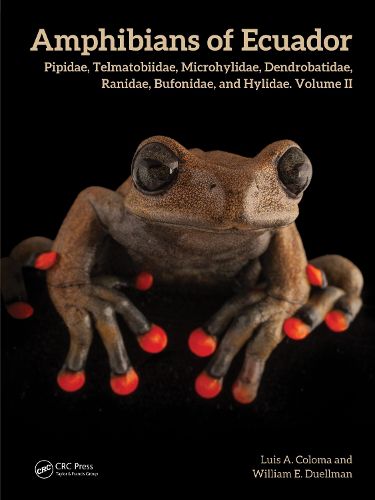Readings Newsletter
Become a Readings Member to make your shopping experience even easier.
Sign in or sign up for free!
You’re not far away from qualifying for FREE standard shipping within Australia
You’ve qualified for FREE standard shipping within Australia
The cart is loading…






This book is the second of four volumes, which are comprehensive, well-illustrated, and authoritative works invaluable to biologists, conservationists, and others. It explores, in comprehensive detail, the rich amphibian diversity of Ecuador, providing a thorough review of biogeography, amphibian declines, and conservation. This volume covers Pipidae, Telmatobiidae, Microhylidae, Dendrobatidae, Ranidae, Bufonidae, and Hylidae. Characteristics of each species are listed, defined, and compared to similar other species. Reproductive behavior, where known, is described, as are data on vocalizations, larvae, and ontogenetic changes. Amphibian distributions are illustrated with physiographic maps with dots. Each volume addresses the declines, extinctions, and conservation status of each species and provides notations of their occurrence in reserves.
KEY FEATURES
Provides detailed and authoritative accounts for each species in seven families: Pipidae, Telmatobiidae, Microhylidae, Dendrobatidae, Ranidae, Bufonidae, and Hylidae
New data are incorporated for many species
Describes with full-color maps the distribution of all known taxa
Includes information on the ecology, reproduction, and behavior of all taxa
$9.00 standard shipping within Australia
FREE standard shipping within Australia for orders over $100.00
Express & International shipping calculated at checkout
This book is the second of four volumes, which are comprehensive, well-illustrated, and authoritative works invaluable to biologists, conservationists, and others. It explores, in comprehensive detail, the rich amphibian diversity of Ecuador, providing a thorough review of biogeography, amphibian declines, and conservation. This volume covers Pipidae, Telmatobiidae, Microhylidae, Dendrobatidae, Ranidae, Bufonidae, and Hylidae. Characteristics of each species are listed, defined, and compared to similar other species. Reproductive behavior, where known, is described, as are data on vocalizations, larvae, and ontogenetic changes. Amphibian distributions are illustrated with physiographic maps with dots. Each volume addresses the declines, extinctions, and conservation status of each species and provides notations of their occurrence in reserves.
KEY FEATURES
Provides detailed and authoritative accounts for each species in seven families: Pipidae, Telmatobiidae, Microhylidae, Dendrobatidae, Ranidae, Bufonidae, and Hylidae
New data are incorporated for many species
Describes with full-color maps the distribution of all known taxa
Includes information on the ecology, reproduction, and behavior of all taxa